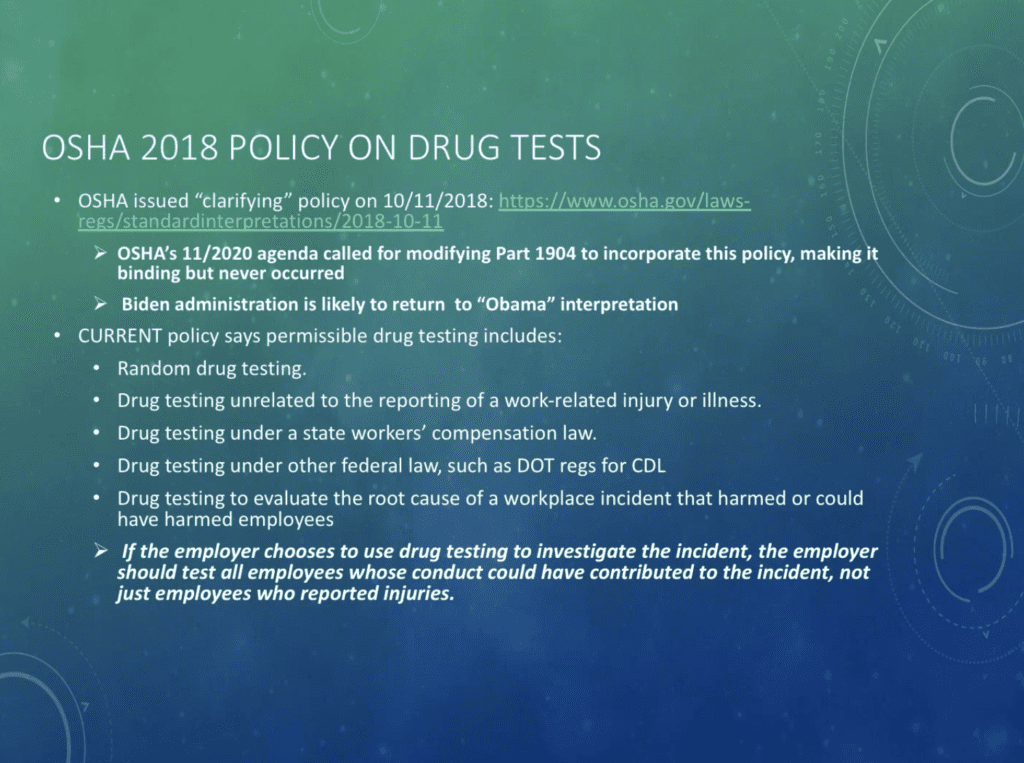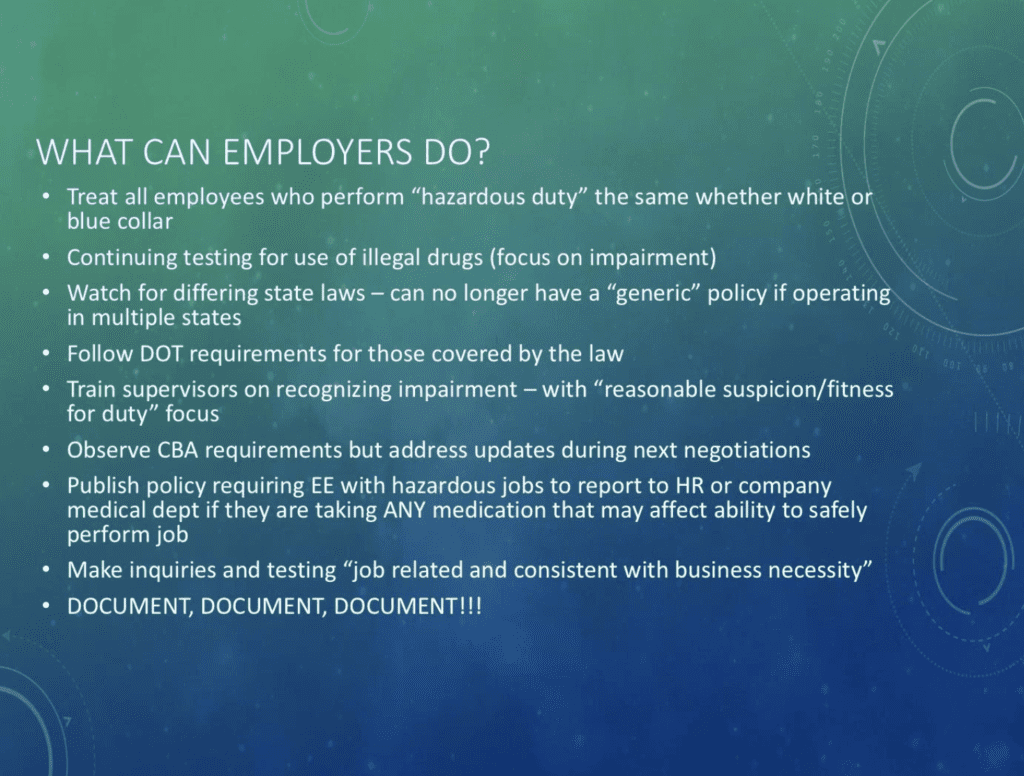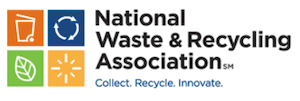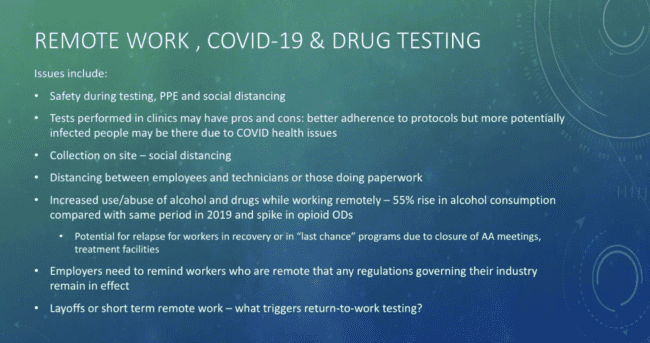Webinar Takeaways: Managing Medical Cannabis Laws and Workplace Safety 101—Don’t Let Your Business Go Up in Smoke!
The waste and recycling industry faces a wide variety of challenges on a daily basis, the largest, and most important, of which being safety. Since the arrival of COVID-19 a year ago, the industry has adjusted its safety policies and procedures to enhance the safety of employees, and now it must gear up for more potential changes as new administrations on the federal and state level bring ever-changing laws that impact medical cannabis, cannabidiol (CBD) and workplace drug testing.
In a recent webinar hosted by the National Waste & Recycling Association (NWRA), “Managing Medical Cannabis Laws and Workplace Safety 101—Don’t Let Your Business Go Up in Smoke!,” Adele L. Abrams, Esq., CMSP, firm president of the Law Office of Adele L. Abrams P.C., shared information on medical cannabis laws, workplace drug testing and how companies can stay compliant with the latest regulations.
To date, 36 states and Washington, D.C., have legalized medical cannabis, and 15 states and Washington, D.C., have legalized recreational cannabis. Additionally, many states are now including employment protection statutes that protect medical cannabis patients from employment discrimination.
“The majority of workers in the U.S. are employed in states where medical cannabis is legal, so employers need to take a hard look at how they are managing their programs and testing,” said Abrams during the webinar.
When it comes to developing or updating substance abuse prevention programs, Abrams said companies should include the following five basic components:
- Written policy: Some states require a written policy in order to legally drug test an employee. The policy should clearly outline the following: rationale, prohibited behaviors, substances covered, employees affected, consequences of policy violation, enforcement means and availability of assistance. (Note: Programs at union operations should be developed in conjunction with the union agreement to avoid collective bargaining agreement violations or claims of National Labor Relations Act Section 8(a)(1) violations.)
- Supervisor training: Supervisors can be a company’s best line of defense against substance abuse in the workplace, or the weak leak in the chain. Supervisors should be trained to recognize a potential addiction-related problem in advance of a catastrophic event, address a situation confidentially and equitably, document a situation, refer an employee to appropriate resources and follow up with an employee about treatment completion or evaluation by the company’s employee assistance program (EAP).
- Employee education: Provide employees with information on how to avoid addiction and where to get help. This has been especially important during the COVID-19 era where stress, isolation and remote work have led to increases in drug and alcohol abuse.
- Employee assistance: If you are drug testing within your company, you should consider having an employee assistance program so employees can get help in advance. These programs, which are confidential and usually managed by a third party, can offer information and referral services for workers with substance abuse problems; additional assessment of the problem; and information on alcoholics anonymous, narcotics anonymous or Al-Anon support programs. (Note: Any disclosure that an EAP manager or counselor makes to an employer would be subject to whatever legal, medical and/or ethical standards regulate the EAP’s work.)
- Drug and alcohol testing: Follow the Department of Transportation’s (DOT) drug and alcohol testing guidance if you’re the following: anyone employing commercial driver’s license (CDL) drivers to operate commercial motor vehicles (CMVs) on public roads; CDL drivers who operate CMVs on public roads; interstate motor carriers; intrastate motor carriers; federal, state and local governments; civic organizations; and faith-based organizations. For others, ensure your substance abuse prevention program and testing are reflective of and responsive to the statutory demands and limitations in the states where you do work.
In regard to reasonable suspicion testing, it’s allowed in all states, but there may be specific provisions that govern. Reasonable suspicion testing is also covered in DOT rules and regulations, and private employers with non-DOT employees are free to perform reasonable suspicion testing, subject to applicable state laws. Lastly, observations (i.e., employee conduct, behavior, appearance or body odors) made of an employee exhibiting signs of impairment (many employers use 20 ng for cannabis) must be articulable and documented by a supervisor who has participated in training on the signs and symptoms of alcohol and drug misuse and the requirements for reasonable suspicion testing.
Another important factor to consider when developing your substance abuse prevention program is workers’ compensation claims. For years, companies have been drug testing employees after an accident because if an employee tested positive, companies could use that as a defense in many states to pay workers’ compensation. However, in about a dozen states, employers are now required to reimburse employees for medical cannabis if they are using it as the doctor’s recommendation for workers’ compensation treatment. This option, according to Abrams, is in response to the opioid epidemic and can possibly effectively relieve pain.
While every substance abuse prevention program will differ based on federal and state regulations, it’s important to note the Occupational Safety and Health Administration’s (OSHA) recordkeeping rule that includes a ban on discrimination and discipline against injured employees that is not imposed upon uninjured workers.
A 2018 memorandum of the rule provides further guidance of OSHA’s position on workplace safety incentive programs and post-incident drug testing under 29 C.F.R. § 1904.35(b)(1)(iv). It also includes a policy change by the Trump administration that states: “If the employer chooses to use drug testing to investigate the incident, the employer should test all employees whose conduct could have contributed to the incident, not just employees who reported injuries.”

According to Abrams, OSHA was slated to codify this change in fall 2020 to prevent the incoming administration from switching back to the policy made by the Obama administration, but OSHA didn’t follow through on that task. With the Biden administration now in place, it’s expected that the policy will be voided and will be changed back to the original interpretation that came out of the preamble.
As we prepare for these changes and for remote employees to return to working in the field, here are some additional steps employers can take to ensure a safe, substance-free work environment:

Interested in learning more? Listen to a recording of the webinar here.


